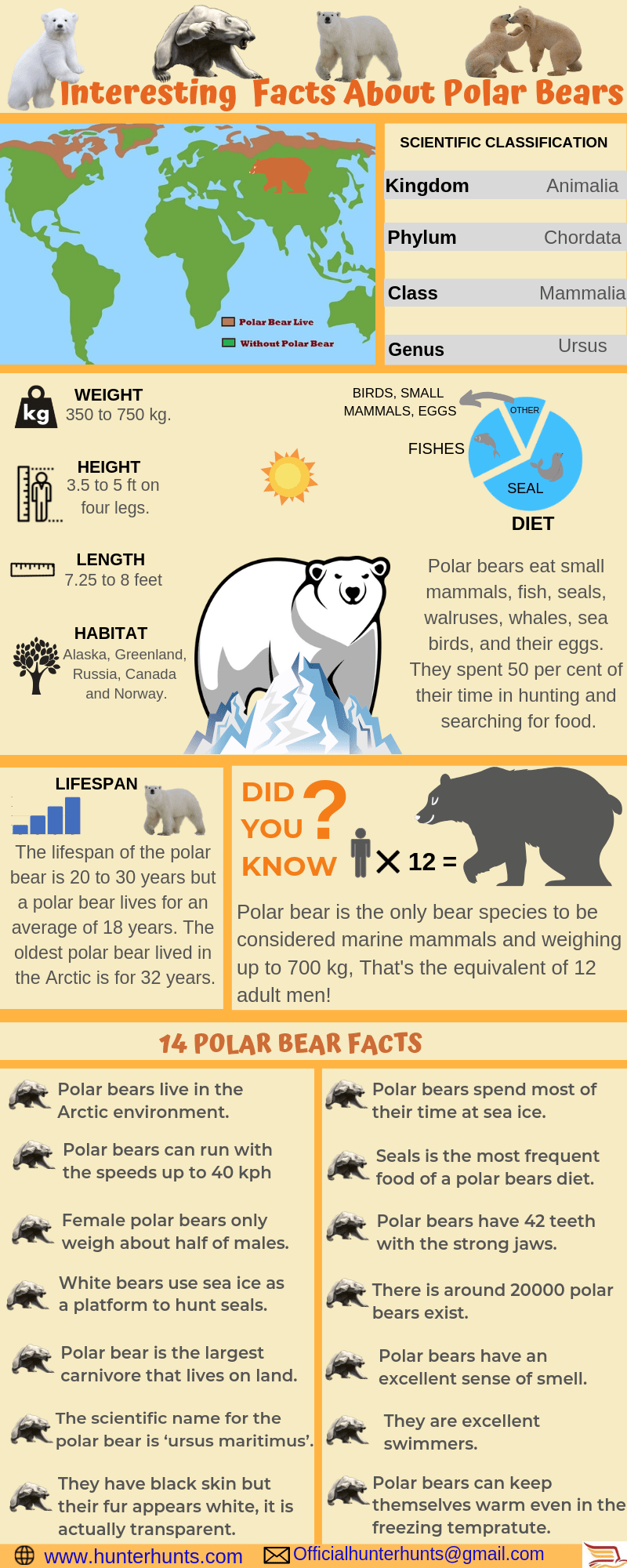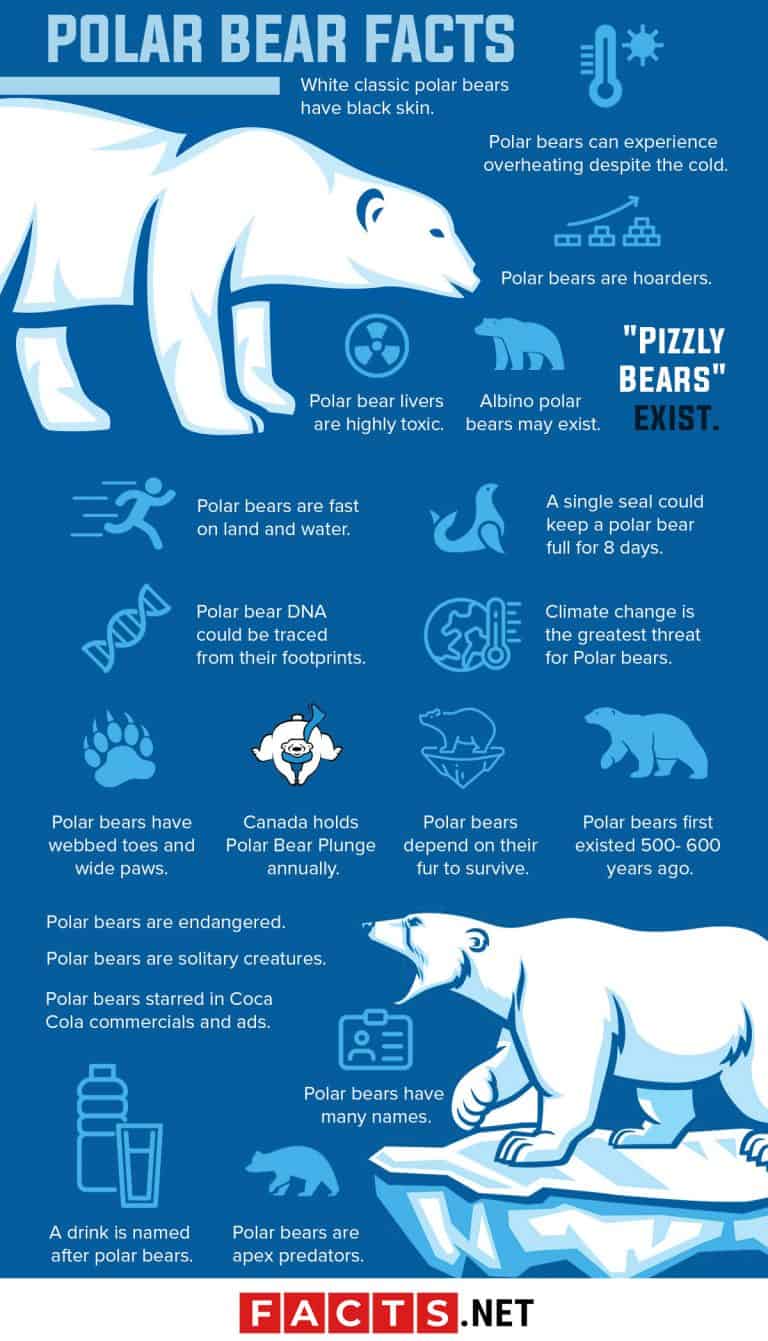Fascinating Facts About Polar Bears
Polar bears, the majestic rulers of the Arctic, are not just captivating creatures; they are also symbols of the fragility of our planet's ecosystems. As the world's largest land carnivores, these magnificent animals have adapted to survive in one of the harshest environments on Earth. From their unique hunting strategies to their remarkable physical adaptations, facts about polar bears reveal how they are perfectly designed for life in the cold. In this article, we will delve into the world of polar bears, uncovering intriguing truths that highlight their significance in the natural world.
As we explore the facts about polar bears, we will also discuss the ongoing conservation efforts aimed at protecting these incredible animals. With climate change posing a significant threat to their habitat, understanding their behaviors, habitats, and the challenges they face is more crucial than ever. Join us on this journey to learn more about these incredible creatures and the importance of preserving their environment.
Through this exploration, we will answer pressing questions about polar bears, including their diet, social behavior, and the implications of their declining population. Whether you are an avid wildlife enthusiast or simply curious about these remarkable creatures, the facts about polar bears will surely fascinate and educate you.
What Are the Physical Characteristics of Polar Bears?
Polar bears are built for survival in their icy habitat. Here are some key physical characteristics:
- Size: Adult polar bears can weigh between 900 to 1,600 pounds and can reach lengths of up to 8 feet.
- Fur: They have a thick layer of fur that helps insulate them against the freezing temperatures, with a layer of blubber underneath for added warmth.
- Color: Although polar bears appear white, their fur is actually transparent and reflects visible light, making them look white against the snow and ice.
- Paws: Their large, furry paws act like snowshoes, distributing their weight and preventing them from slipping on ice.
What Do Polar Bears Eat?
The diet of polar bears predominantly consists of marine mammals, particularly seals. Some key facts about their diet include:
- Polar bears primarily hunt ringed seals and bearded seals, using their keen sense of smell to locate breathing holes in the ice.
- They are classified as carnivores but are also known to scavenge carcasses when hunting is tough.
- Polar bears can consume up to 100 pounds of seal blubber at one time, which provides the necessary fat reserves for survival.
How Do Polar Bears Adapt to Their Environment?
Polar bears have several adaptations that enable them to thrive in their cold habitat:
What Is the Social Behavior of Polar Bears?
Polar bears are generally solitary animals, but they exhibit interesting social behaviors:
- Mother bears are fiercely protective of their cubs, teaching them essential survival skills until they are about two years old.
- During the summer months, when food is scarce, polar bears may be seen gathering in groups around abundant food sources.
- They communicate through vocalizations, body language, and scent marking to establish territory or attract mates.
How Do Polar Bears Reproduce?
Understanding the reproductive cycle of polar bears is essential for their conservation:
- Polar bears typically mate in the spring, with a gestation period of about 8 months.
- When the cubs are born, they are small and helpless, weighing about one pound at birth and relying entirely on their mother for care.
- Cubs usually stay with their mother for up to 2.5 years, during which they learn vital survival skills.
What Threats Do Polar Bears Face?
Polar bears are classified as vulnerable due to several threats:
- Climate Change: The melting of sea ice due to rising temperatures limits their hunting grounds and affects their ability to find food.
- Pollution: Contaminants like heavy metals and persistent organic pollutants accumulate in their bodies, affecting their health and reproduction.
- Human Activities: Oil drilling, shipping routes, and increased tourism in the Arctic pose risks to polar bear habitats.
How Can We Protect Polar Bears?
Conservation efforts are critical to ensuring the survival of polar bears:
- Support organizations dedicated to polar bear conservation and climate change initiatives.
- Spread awareness about the importance of reducing carbon footprints and protecting the Arctic environment.
- Advocate for sustainable practices and policies that prioritize wildlife conservation.
What Is the Future of Polar Bears?
The future of polar bears hangs in the balance, with ongoing efforts necessary to ensure their survival:
- Continued research on polar bear populations and their habitats is essential for effective conservation strategies.
- International cooperation is crucial in addressing climate change and protecting the Arctic ecosystem.
- Public education and engagement can foster a deeper understanding of the issues polar bears face and inspire action.
In conclusion, the facts about polar bears reveal a complex interplay between these magnificent creatures and their environment. As we learn more about their behaviors, adaptations, and the challenges they face, we can better appreciate the importance of protecting them and their habitat. By taking action to combat climate change and supporting conservation efforts, we can help ensure that future generations will have the opportunity to marvel at these incredible animals in the wild.
Noodlenagazine: The Flavorful Fusion Of Culture And Culinary Arts
Exploring The Unique Comedy Style Of Abhishek Stand Up Comedian
Discovering The World Of Noodlemagaizne
:max_bytes(150000):strip_icc()/polar-bear-150005875-5c4db42046e0fb0001a8e7b8.jpg)


ncG1vNJzZmiqn5i4o77InZ6emqKqtq%2B%2FjaipoGeTnsG6sdepmKeco567p77ArKurrZOpwrOxjp%2BYnKyjYq6ju9StZKmnnJa%2Fbq7EmqlnoKSiuQ%3D%3D